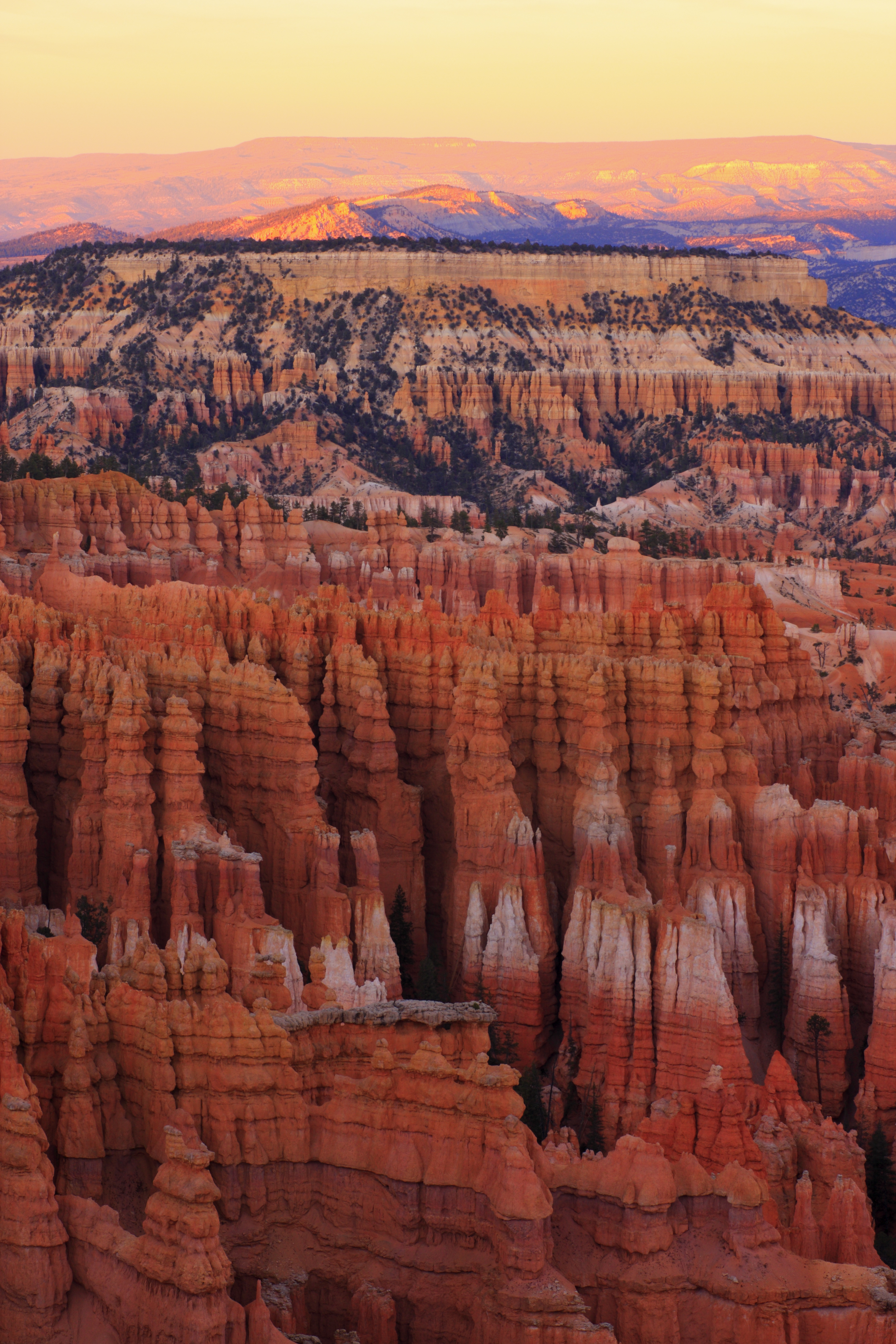This article first
appeared in Issue 3 of our free digital magazine CURIOUS.
The Grand Staircase is a 160-kilometer (100-mile) stretch of sedimentary rock that was first conceptualized by geologist Clarence Dutton in the 1870s. Dutton saw it as an immense stairway that at one end rises out of the Grand Canyon and at the other reaches up to a high plateau upon which sits Bryce Canyon National Park, representing a small sliver in the final step of this epic, 200-million-year-old formation.
Bryce Canyon’s emergence began around 50 million years ago when parts of Utah were still covered in an ancient lake and floodplain system during which time layers of sediments began to accumulate. As the land dried up and the layers were committed to the region’s geological record, the plateau was uplifted by plate tectonics, exposing the alternating layers of rock made up of different strengths and colorations.
Bryce Canyon’s rocks contain limestones, dolostones, mudstones, siltstones, and sandstones. As weathering broke down these layers at different rates, erosion stripped the weaker parts away until, eventually, they carved out hoodoos: a geological term used to describe rock spires carved out by natural forces.

Sat atop the Grand Staircase, Bryce Canyon is a veritable theme park for geology fans. Image credit: John A. Anderson/Shutterstock.com
Ice and rain are the key sculptors to thank for the staggering creation that is Bryce Canyon National Park, now home to the greatest concentration of hoodoos on Earth. The extreme elevation of the canyon is partially to blame, putting it at a height where freezing temperatures are experienced for more than half of the year.
The constant freezing and thawing of water in the rock results in what’s known as “ice wedging”, where water turning to ice expands and breaks the rock apart. These breaks often start as walls, then become holes, and later morph into hoodoos.
Considering ice and freezing temperatures have been so pivotal in Bryce Canyon’s formation, it’s a source of concern for geologists as to what might happen to the region in the face of the climate crisis. With freeze-thaw days apparently on the decline, warming temperatures could erase Bryce Canyon’s iconic hoodoos. However, little research has been done on the topic and, as Clare Crise concluded for the National Park Service “without the science, we cannot hope to address or adapt to climate change’s impacts on them.”
How to get there
The closest flight destination is Cedar City Regional Airport, which is roughly a two-hour drive from Bryce Canyon National Park. For international flights, Las Vegas and Salt Lake City airports are good alternatives.
CURIOUS is a digital
magazine from IFLScience. Each month it features interviews, experts, deep
dives, fun facts, news, book excerpts, and much more. Issue 7 is OUT NOW, or subscribe to get it delivered to your inbox.
Source Link: A Record-Breaking Number Of Hoodoos Can Be Found In Bryce Canyon